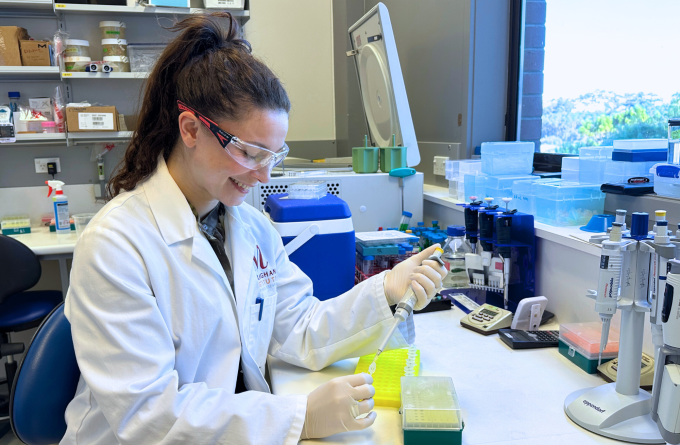27 June 2024
Research by the Malaghan Institute has deepened our understanding of the diversity of eosinophils, a type of immune cell involved in a range of diseases from parasitic infections to cancer. The study, published in Immunology & Cell Biology, helps further understanding of how immune cells protect us from disease.

Sophia Noble
Of the many different kinds of immune cells, eosinophils are one of the more mysterious. Commonly grouped within the wider category of white blood cells, eosinophils are most commonly associated with infections from intruders like parasites.
However, their exact role isn’t yet clear. On the one hand, eosinophils play a regulatory role in homeostasis – keeping the gut and other parts of the body on an even keel. Yet, other research has shown that in cases like asthma, they contribute to pro-inflammatory responses, driving the progression of the disease. Understanding these elusive immune cells is an important step towards harnessing them to help fight disease.
“We think that, as with all immune cells, the primary role of eosinophils is to protect the body and maintain homeostasis,” says Malaghan Institute PhD student Sophia Noble, who led this research as part of her thesis. “However, if eosinophils become overactive this can have unwanted side effects and can contribute to the cycle of inflammation, cause tissue damage and contribute to disease.
“In this research we wanted to understand more about eosinophils, and specifically, how they respond and change during parasite infection and other challenges to the lung. We wanted to comprehensively characterise eosinophil subtypes following infection.”
Using flow cytometry, Sophia studied eosinophils in the lungs of mice that were infected with the parasitic worm Nippostrongylus brasiliensis. She found that upon exposure, the eosinophils differentiated into two distinct subtypes, migrating to different locations in the lungs and producing different kinds of chemical markers. This was also the case with other kinds of challenges to the immune system, such as exposure to dust mites, suggesting this diversity is an important part of how eosinophils function when fighting disease.
“These kinds of findings are important as they suggest we can’t take a heavy-handed approach to targeting immune cells like eosinophils for therapies. Eosinophils are part of the innate immune system. The innate arm of the immune system is the first line of defence, with innate immune cells responding rapidly to a broad range of invading pathogens,” says Sophia.
“For a long time innate immune cells were considered to be a blunt tool of the immune system, with limited adaptability and diversity. However, we now know that innate immune cells, such as eosinophils, are diverse and contribute to a variety of functions. Understanding this diversity and the signals that drive it is essential for understanding human immunology and improving disease treatment.
“Our goal is to continue studying eosinophil diversity with the ultimate aim of understanding what makes an eosinophil beneficial or pathological and how we can target specific types of eosinophils in disease.”
Related articles

Fighting allergic skin disease at its root
17 December 2024

Fever: too hot to handle or the body's first line of defence?
22 August 2024

International collaboration finds lipid imbalance in the skin may contribute to inflammatory conditions
24 June 2024

The ever-evolving world of immunology research
13 June 2024

Double doctor: exceptional thesis awarded to Malaghan gastroenterologist
5 June 2024

Mapping the lung's fight – how the entire organ responds to infection
18 April 2024
